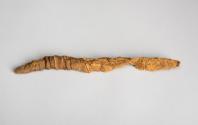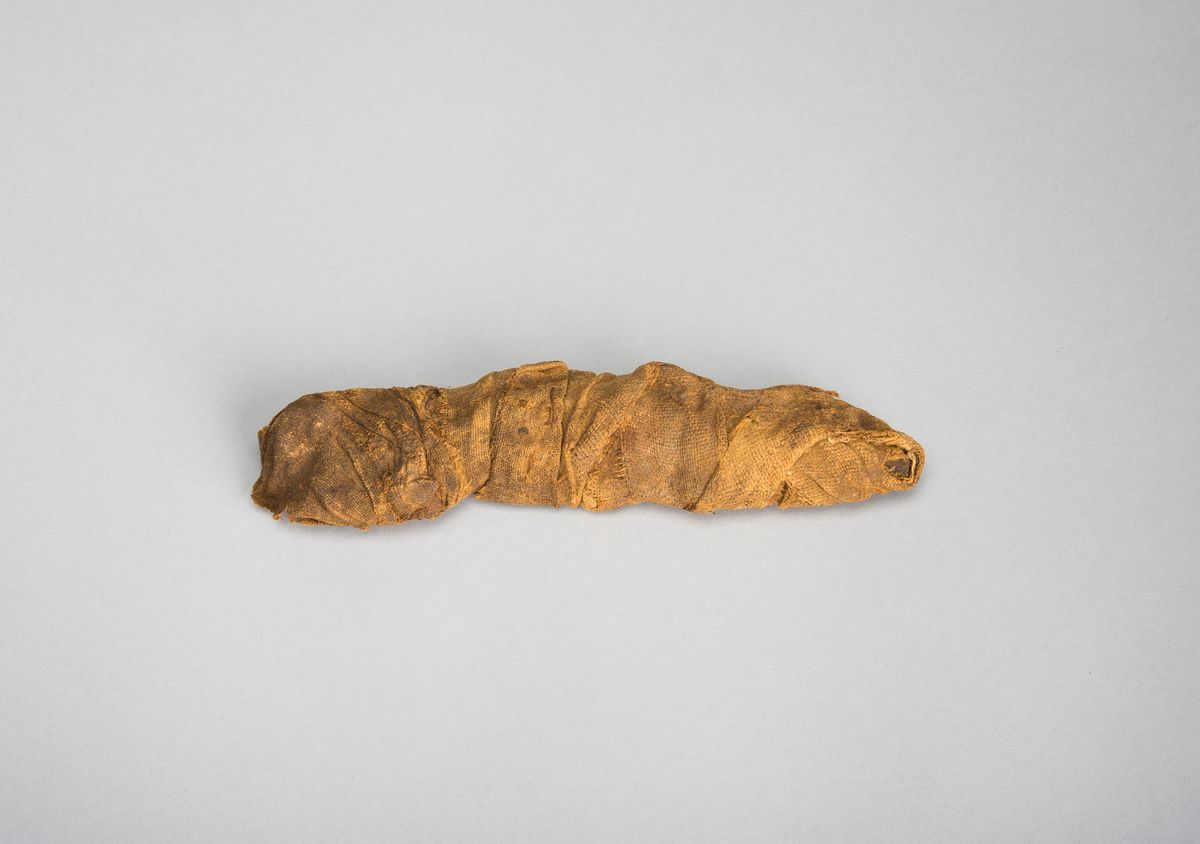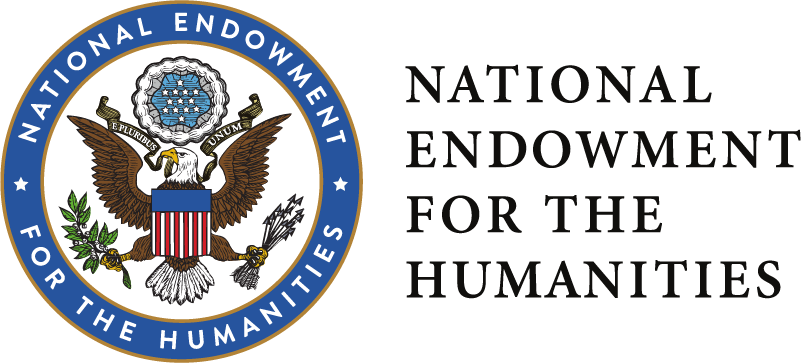Mummified crocodiles
Culture: Egyptian
Period: Late Period-Roman Period
Date: ca. 712 B.C.-A.D. 395
Medium: Crocodile remains and linen
Dimensions:
mummy a: l. 7 3/4 in. (19.7 cm); mummy b: l. 8 1/2 in. (21.6 cm)
mummy c: l. 4 1/2 in. (11.4 cm); mummy d: l. 3 1/2 in. (8.9 cm)
Credit Line: San Antonio Museum of Art, gift of Gilbert M. Denman, Jr.
Object number: 91.80.110.a-d
Provenance: with Robert T. Clough (1923-1982), Keighley, by 1970; sold, Christie's, London, March 10, 1970, lot 261, to Gilbert M. Denman, Jr. (1921-2004), San Antonio; Gilbert M. Denman, Jr., by gift to San Antonio Museum of Art, 1991
Exhibition History: "Egyptian Animal Mummies: Science Explores an Ancient Religion," San Antonio Museum of Art, March 23-July 1, 2018.
Published References
S. M. Schellinger and J. Powers, "Sacred Beasts: Conserving the Animal Mummies in the San Antonio Museum of Art," Scribe: The Magazine of the American Research Center in Egypt (Fall 2020) 16-25.
S. M. Schellinger, “Scientific Analysis of Animal Mummies at the San Antonio Museum of Art,” in Proceedings of the First International Conference on the Science of Ancient Egyptian Materials and Technologies (SAEMT), eds. B. Gehad and A. Quiles (Institut Français d’Archéologie Orientale, 2022), 197-210.
Label Text
(91.80.110.a,b,d)
These mummies contain newly hatched (or neonatal) crocodiles. Excavations at Medinet Madi in the Fayum revealed that the eggs of the sacred crocodiles were kept and allowed to hatch in a building next to the temple of Sobek, the crocodile god of the Nile. After they hatched, the crocodiles were sacrificed, mummified, and sold to devotees who could dedicate them to the god at a local temple.
(Sarah Schellinger, 2018)
(91.80.110.c)
This mummy consists of the front half of a neonatal crocodile. The X-ray to the right shows the partial skeleton of a juvenile crocodile including the head, forelimbs, and part of the spine. This crocodile broke in half, revealing the scales on the underside of its abdomen shown in the image to the right.
(Sarah Schellinger, 2018)
These mummies contain newly hatched (or neonatal) crocodiles. Excavations at Medinet Madi in the Fayum revealed that the eggs of the sacred crocodiles were kept and allowed to hatch in a building next to the temple of Sobek, the crocodile god of the Nile. After they hatched, the crocodiles were sacrificed, mummified, and sold to devotees who could dedicate them to the god at a local temple.
(Sarah Schellinger, 2018)
(91.80.110.c)
This mummy consists of the front half of a neonatal crocodile. The X-ray to the right shows the partial skeleton of a juvenile crocodile including the head, forelimbs, and part of the spine. This crocodile broke in half, revealing the scales on the underside of its abdomen shown in the image to the right.
(Sarah Schellinger, 2018)
Not on view
In Collection(s)
The San Antonio Museum of Art is in the process of digitizing its permanent collection. This electronic record was created from historic documentation that does not necessarily reflect SAMA's complete or current knowledge about the object. Review and updating of such records is ongoing.








 This resource has been made possible in part by the National Endowment for the Humanities: Exploring the Human Endeavor.
This resource has been made possible in part by the National Endowment for the Humanities: Exploring the Human Endeavor.
